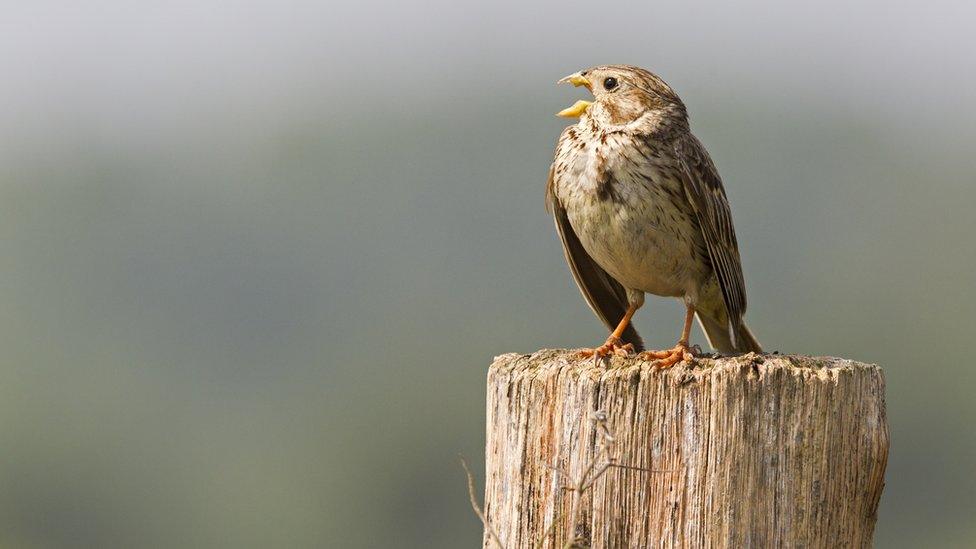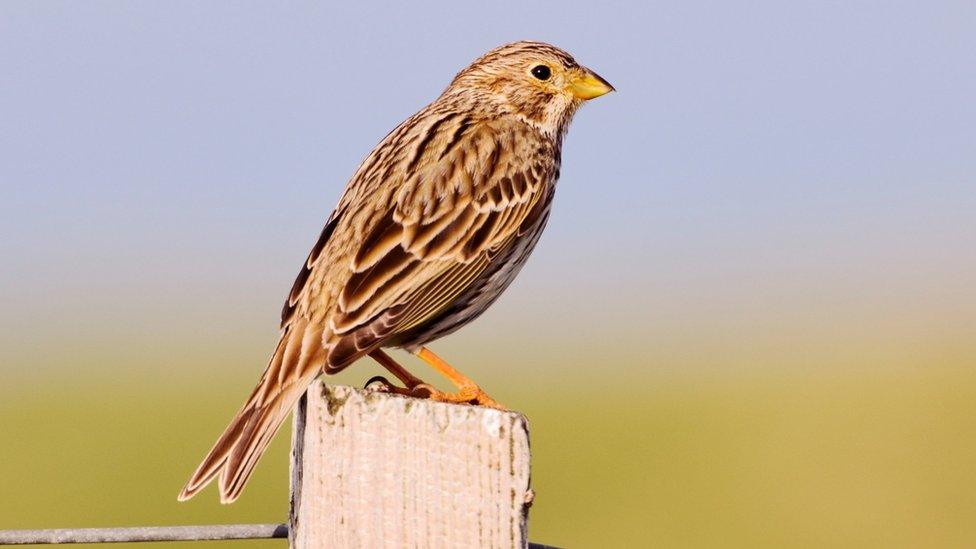Report suggests new hope for fat bird of the barley
- Published

Numbers of corn bunting began to go into severe decline in the 1970s
Numbers of one of the UK's most at risk birds have stabilised and may even be recovering in parts of Scotland, a new report suggests.
Corn buntings, which are also known as the fat bird of the barley, are an RSPB red list species, external having suffered "dramatic population decline".
In Scotland, the birds are restricted to "four core areas" - Fife, Angus, Western Isles and Moray/Aberdeenshire.
The report suggests a halt to declining numbers in Moray/Aberdeenshire.
The study for Scottish Natural Heritage (SNH) examined the effect of six years of agri-environment schemes that encourage farmers to work their land in a way that benefits wildlife.
Methods involved include cutting hay and silage at times that avoid disturbing nesting buntings, and sowing crops that provide the birds with food.
The report said numbers of corn buntings had stabilised on farms involved in the schemes, were no longer declining as steeply on farms without schemes and could even be recovering across the wider area.
'Wonderful news'
SNH said the study's findings included a "slight increase" in corn bunting numbers across the 48 farms surveyed, with 246 territorial males in 2015, compared with 232 in 2008-09.
It said this was "in sharp contrast" with severe, long-term decline across Scotland in the 1970s to 2000s.

Corn buntings are found on farmland
Jessica Shaw, SNH ornithologist, said: "It's wonderful news that the number of corn buntings in Aberdeenshire and Moray has stabilised, with the good work done by many farmers in the area.
"But we can't be complacent, as the population is still much lower than 20 years ago.
"We're committed to working with farmers to increase the number of corn buntings in Scotland."
Allan Perkins, RSPB Scotland conservation scientist, said: "The results of the survey are very encouraging, and a reflection of the many years of partnership working with farmers in these areas to improve the fortunes of this fantastic bird.
"Corn buntings favour farmland which is managed less intensively, especially late-cut meadows and weedy cereal fields, along with a rich source of seeds and grain during winter.
"Government funding is available for this type of management, and we encourage more farmers to participate to help restore corn bunting numbers to what they were in the 1990s."
- Published3 August 2013

- Published21 September 2012

- Published3 August 2012
![Corn bunting [Pic: Andy Hay/RSPB]](https://ichef.bbci.co.uk/ace/standard/464/mcs/media/images/61979000/jpg/_61979205_corn_bunting_rspb.jpg)